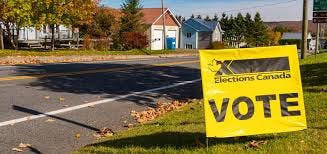Women candidates close funding gap: Elections Canada report
Female candidates for House of Commons edge out males in cash resources
The number of women candidates running to become Members of Parliament has increased substantially over the last five elections. But are they attracting as much money for their campaigns as their male counterparts?
A new study by Elections Canada says not only have women candidates closed a money gap, they’ve overtaken their male counterparts in cash raised.
The draft analysis, obtained under the Access to Information Act, shows that women candidates raised $37,300 on average for their campaigns during the last federal election, in 2021, compared with $35,100 for men.
Women candidates had a similar edge in the 2019 election ($38,100 versus $37,400), unlike the previous three elections where women lagged as money-raisers.
The study also looked at the sources of that cash, whether from loans, individuals, or the parties and riding associations.
Rule-tightening in 2014 has reduced loans to a minor fund-raising factor for all candidates. And contributions from individuals, regardless of the candidate’s gender, have remained fairly modest throughout. The serious money comes from the parties.
The Elections Canada analysis of party funding again shows that the male money edge in the elections of 2008, 2011 and 2015 flipped in favour of women candidates for 2019 and 2021.
Average cash transfers from parties and their associations in the 2021 federal election were $34,000 for women candidates, compared with $31,000 for male candidates. Women also had a slight edge in the 2019 election, $33,800 versus $33,000.
The report does not break down the amounts transferred by each party to their male and female candidates for individual elections, making it impossible to identify party trends over time.
But for all five elections held between 2008 and 2021, the Conservatives transferred an average of $86,700 to their female candidates compared with $78,800 by the Liberals.
The study also looked at candidate spending over the last five elections, concluding that “male candidates reported higher per person election expenses compared with female candidates; however, the data shows [sic] that the gap may be starting to close.”
The researchers also examined close races where one candidate was male and the opposing candidate was female. They found that “male candidates won more often but spent less to win” – a reminder that money does not always tip the balance.
Other sections of the in-depth report analyze rural-urban and regional factors, drawing on Elections Canada’s rich database.
A copy of the draft report, which is to be published later this year, is available here:
Elections Canada launched the study partly in response to a 2019 House of Commons report by the Standing Committee on the Status of Women. The document, Elect Her: A Roadmap for Improving the Representation of Women in Canadian Politics, called for better data collection and analysis, among other recommendations.
In the last election, there were 706 female candidates representing 38 per cent of all those vying for a seat in the House of Commons. That was a significant increase over 29 per cent in the 2008 election, with the levels rising over those 14 years. Currently, the House of Commons has 104 women MPs, or 31 per cent of the total.
Beginning with the 2019 federal election, candidates could also list themselves as either undeclared or X, that is, neither male nor female. For registered parties in the 2021 election, 41 candidates were undeclared, while eight were listed as X.
Canada’s next general election is widely expected sometime this spring.






Hi Karel - thx for your comment. Not published yet, likely still in translation. And of course with the election, routine processes slow down. Best to contact them directly for a timeline:
https://www.elections.ca/content.aspx?section=cont&document=index&lang=e
cheers and good luck with your research
Dean
Hi Dean! This article was really insightful, and provided me some good resources for my research. I was wondering if you know there's a published version of the draft analysis yet? If so, could you so kindly post it? Thank you so much!